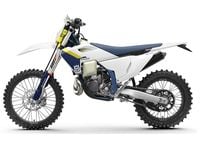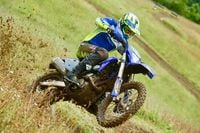In part 2 of hard enduro ace Nick Fahringer’s series on tackling extreme terrain, the FactoryOne Sherco rider demonstrates how to handle off-camber, or slanted, and slippery logs. Fahringer takes it from here:
“It’s just rained here in this green moss-covered terrain and everything that is not soil is slippery. So you want to be precise and deliberate when crossing a log, particularly an off-camber log. You want to try to collect any energy where you have traction. In other words, apply throttle in areas where there is good traction so you have enough momentum to coast over the slippery parts of the obstacle.”
/cloudfront-us-east-1.images.arcpublishing.com/octane/SWRMS3EHZFA47IVBDGWUCQ5SFM.jpg)
/cloudfront-us-east-1.images.arcpublishing.com/octane/6UTC5ISWGFBJFFUWKGJPIAG4XA.jpg)
/cloudfront-us-east-1.images.arcpublishing.com/octane/DK5B6A4TGNAA7NZPIIVHN33RVM.jpg)
/cloudfront-us-east-1.images.arcpublishing.com/octane/MJ3VAPZPXVBNFDIP3IQ2MQDEQA.jpg)























